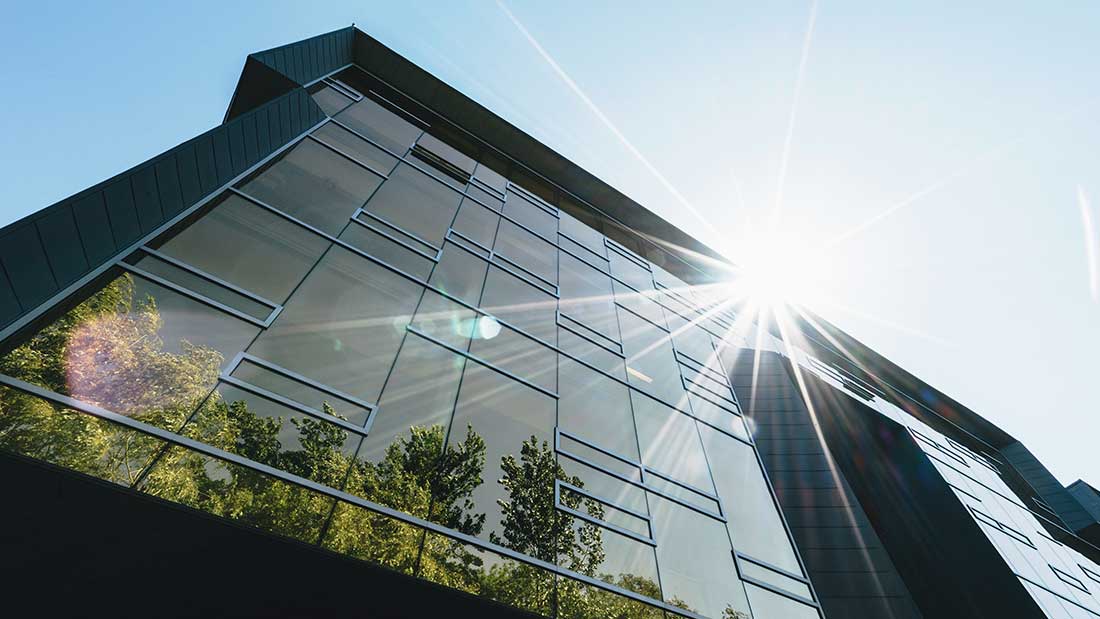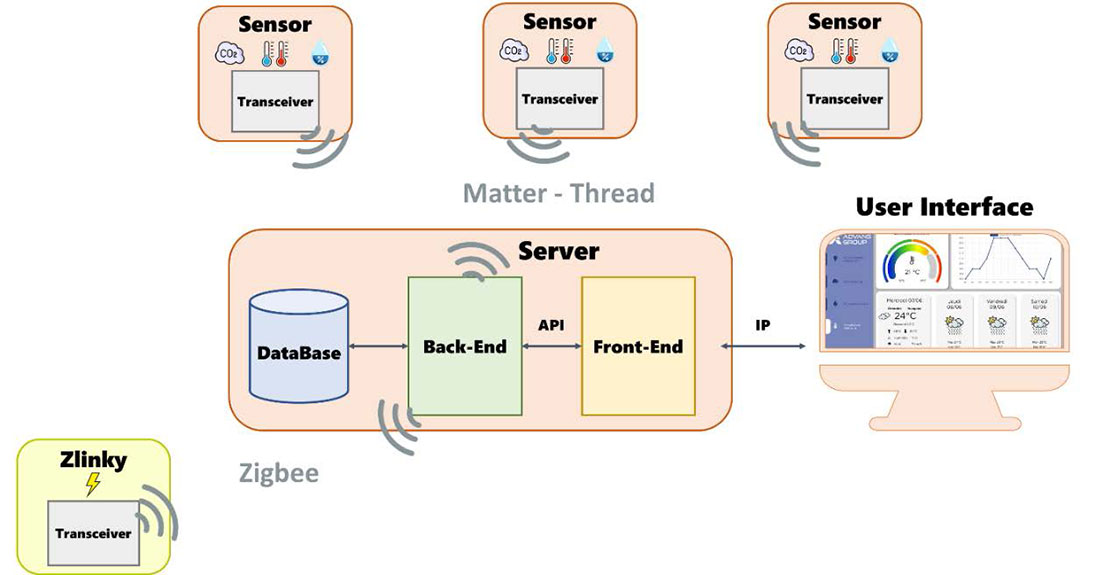
Reduce our energy consumption
A desktop computer consumes several hundred kWh of electricity per year, depending on its use; a little less for a laptop. If you add to that the remote screens and multiply everything by the thousand employees of the group, the overall annual consumption of our workstations amounts to hundreds of thousands of kWh. With this quick calculation, we have not yet taken into account server racks, heating/air conditioning devices, meeting and break room equipment, etc.
ADVANS Grenoble entrusted a team of interns with the mission of creating a complete system for collecting ecological data (electricity consumption, CO2 level, humidity level, and temperature). There were four objectives: collect, analyze, raise awareness, and optimize consumption to promote an increasingly responsible, healthy, and pleasant working environment for our teams.
The first functional version of the system is installed in Grenoble and is already producing the first tangible results. In 2024, a new team of interns will aim to go even further.
Project description
To evaluate and improve the environmental impact of ADVANS Grenoble, three key parts were identified by the project team:
- Data collection, carried out by a system of sensors.
- Their clear display on ADVANS Grenoble TV screens via web interfaces integrated into a Raspberry Pi.
- All of this requires multidisciplinary collaboration, implementing a variety of skills combining hardware design, firmware programming, database management (backend), and the creation of user interfaces (frontend).
Architecture
The project ecosystem revolves around a server running on a Raspberry Pi. Here are its main elements:
- The Raspberry Pi hosts the back-end, which is the logical part allowing the database and the front-end to be interfaced. It provides data to the front-end and more generally stores all the information received from the sensors.
- Within the database, we find all the indices of electricity consumption, temperature, CO2, and humidity.
- The front-end is also hosted on the Raspberry Pi. It is deployed on a web server, which allows access to the user interface via the company’s Internet network.
System architecture
Data collection is carried out according to their nature.
The building’s electricity consumption is obtained using a Zlinky module which plugs directly into the Linky smart meters and communicates electricity consumption information wirelessly via the ZigBee protocol.
The temperature, humidity level, and CO2 concentration data are collected via electronic boards designed and programmed by the team. They integrate a microcontroller as well as a radio antenna to communicate the different measurements to the server. These boards communicate using the Zigbee protocol, with the goal for next year to use Matter, an emerging wireless communications protocol.
The team
The team followed a Scrum project management method. It was made up of eight members, with a maximum of six people working simultaneously:
- Antoine, electronic board designer
- Evan, embedded software developer
- Clément, back-end developer
- Thomas, back-end developer
- Tony, back-end developer
- Maxime, front-end developer
- Julien, front-end developer
- Loïc, Product Owner and Scrum Master
The team was managed by Victorien (ELSYS Design), Kevin (AViSTO), Benjamin (AViSTO) and Nicolas (AViSTO).
The results
Tony shares his enthusiasm with us: “The presentation of the results raised awareness by demonstrating that the simple act of turning off the machines in the evening when leaving already represented a lot. By doing this, we consume less: it’s great for the ecology, it’s great for the company’s consumption, it’s great for everyone!
I’m delighted to have contributed to this super interesting project by working on the backend and deployment of the application. […]
If everyone tries to contribute a little more, we can drastically reduce the impact on our environment which is deteriorating day by day. »
Next step: continue to use the system daily to limit our consumption and further improve our working environment.
This feedback will also be very useful to the new team of interns (arrival planned for the first quarter of 2024), whose mission will be to deepen the work carried out in 2023 to, ultimately, deploy the system in all of the ADVANS Group companies’ premises.
